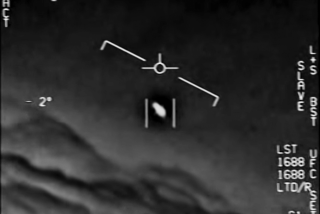An Astronomer Gazes Earthward
- Share via
Brown dwarfs and little green men inhabit Benjamin Zuckerman’s working world.
Neither cartoonist nor fantasist, Zuckerman is an astronomer whose recent discovery of the first brown dwarf suggests that other planets exist outside the solar system. Zuckerman defines a brown dwarf as “an object not massive enough to be a star, but bigger than a planet.” While this discovery fuels the imagination of astronomers and non-scientists alike about the possibility of intelligent creatures living on these celestial objects, Zuckerman laughs at the possibility of conversing with an extraterrestrial.
He is more interested in life on what he believes is a truly exotic and probably unique stellar body--the Earth.
At 43, an astronomy professor at UCLA since 1982, Zuckerman finds time after international conferences in India to trek in Nepal, or between visits to American observatories to hike through remote corners of the Grand Canyon.
A New Yorker who fell in love with the West, he is especially drawn to remote habitats.
“I love the river canyons of the Southwest because they are beautiful and unspoiled,” he said.
From Atheist to Agnostic
Like many astronomers who have to travel to telescopes on isolated peaks and deserts, Zuckerman has come to appreciate his earthly surroundings as much as the deep space he studies.
Once an atheist, he now calls himself an agnostic.
“It is hard not to believe. We are in a remarkably constructed universe,” he said.
The beauty and complexity of the sky he explores with telescopes--and the earth he treads--have convinced him that there must be some plan.
This awe has turned him into an active conservationist. He muses about abandoning his study of the heavens and devoting himself to the immediate challenge of preserving endangered species. He carries a newspaper clipping in his wallet that quotes David Ben Gurion: “Anyone worth anything must have two careers. If you do not do two things, your life is a waste of time.”
But the search for extraterrestrial life keeps tickling his consciousness.
“I will be surprised, but not amazed, if intelligent life is discovered in our lifetime,” he said.
The brown dwarf he discovered has rekindled talk of life elsewhere in this galaxy. It is a cool, gaseous globe about the size of Jupiter that he detected using the infrared telescope atop Mauna Kea in Hawaii. He noticed that there was an excess of 90% more radiation than there should have been around a known star.
The discovery of this first brown dwarf suggests that additional optically invisible bodies exist in other solar systems, some of which may support life. Zuckerman is very sensitive to these implications.
Earlier in his career he co-discovered various molecules in space, including formaldehyde, ethyl alcohol and formic acid--some of the building blocks of life. In the early 1970s, he was also part of a search for distant radio signals from other worlds.
But he insists: “I think of myself as an observationalist. I don’t like to speculate.”
But he does speculate.
That search for extraterrestrial life left him a skeptic, and in a book he co-edited in 1982, “Extraterrestrials: Where Are They?,” he says humans haven’t picked up any signals because there are no extraterrestrials trying to signal.
Doubts Successful Search
“Maybe,” he said, “the planned Jet Propulsion Lab/National Aeronautics and Space Administration search for extraterrestrial life, which is scheduled to start in 1989, will find it. But I think their chances for success are nil.”
He points out that there are three separate leaps of faith involved. First is the belief that there are other planets in other solar systems. This, he grants, is probably true, especially in the light of his recent discovery.
Next is the belief that life has evolved elsewhere. This, too, is probably true considering the organic molecules he himself has discovered.
But finally, there is the leap from simple organic compounds to intelligent life. This is the step he does not believe has occurred in any region within communicating distance of the Earth. He points out that the brown dwarf is probably no more welcoming to life than Jupiter.
Of course it may not be a brown dwarf.
Strange Radiation Search
“It could be a group of dust particles or asteroids,” he said. Or, he adds with tongue in cheek, the radiation could be produced by “Little Green Men.” He jots down an equation and labels the unknown “LGM.” This strange source of radiation--he cannot suppress a grin--could be an artificial power source, an astro-engineering project of hypothetical aliens.
He seems to get a kick out of conjuring up accomplishments for these creatures. In his book about extraterrestrials, he fantasizes that “advanced civilizations may reorganize their solar systems taking apart moons and even planets to construct habitats in space. Advanced astro-engineers could produce huge sources of radiation . . .” a brown dwarf.
All this is possible. But Zuckerman doesn’t believe it. His brown dwarf is probably a lifeless globe much like the outer planets in our solar system.
The idea of little green men as an astronomical solution is said to have arisen at a pub near Cambridge, England, where astronomers used to cycle for lunch. They are said to have been eating at the Little Green Man in 1967 when radio astronomers picked up the first regular radio beeping signals from outer space. The signals were unprecedented. No one knew what they were. Someone suggested, half-kiddingly, that they were messages from aliens, from little green men.
Pulsar Caused Beeps
The radio beeps turned out to be coming from a new phenomenon--a pulsar--a neutron star that spins many times a second, emitting waves like the searchlight on a lighthouse.
Since then, Zuckerman explains, LGM has become shorthand for the unknown, and for some people it means that hoped-for event--signals from extraterrestrials.
The proposed JPL-NASA 10-year program starting next year will cost about $50 million, or about $50 a star, and is far more sophisticated than the effort with which Zuckerman was involved. It will use two approaches--a broad sweep of the whole sky for strong signals, and a target search of 800 solar-type stars near the earth.
Ed Olsen at JPL explains that they hope to be able to filter out background noise and pick up microwave signals from another civilization.
But Olsen also admits it will be like searching for a needle in a haystack--a golden needle in a stack of bronze hay.
While Olsen does not expect to be able to carry on a dialogue with extraterrestrials, he does hope “to intercept some sort of record, a literature or a history that has been beamed outward in the hopes of immortality, just as we on earth record our history in the hope that someday, someone will find it.”
Earth Is Not Unique
Basic to Olsen’s faith is the belief that “the Earth is not a unique thing, compared to what we see outside our solar system.”
He believes that the size of the universe and the prevalence of carbon and oxygen atoms makes it more than likely that other intelligent life has existed and still exists.
There is oxygen in space. “Any oxygen atmosphere implies life,” Olsen said. To him, Zuckerman’s brown dwarf is additional proof that there are other planets. Unlike Zuckerman, he estimates that the odds of oxygen-rich planets evolving life in some way akin to our own are high.
With the discovery of organic molecules in space and brown dwarfs near other stars, Zuckerman could be seen to be defending a losing position about the likelihood of finding extraterrestrial life. But Zuckerman points out: “We still haven’t received any messages.”
More to Read
Sign up for Essential California
The most important California stories and recommendations in your inbox every morning.
You may occasionally receive promotional content from the Los Angeles Times.













